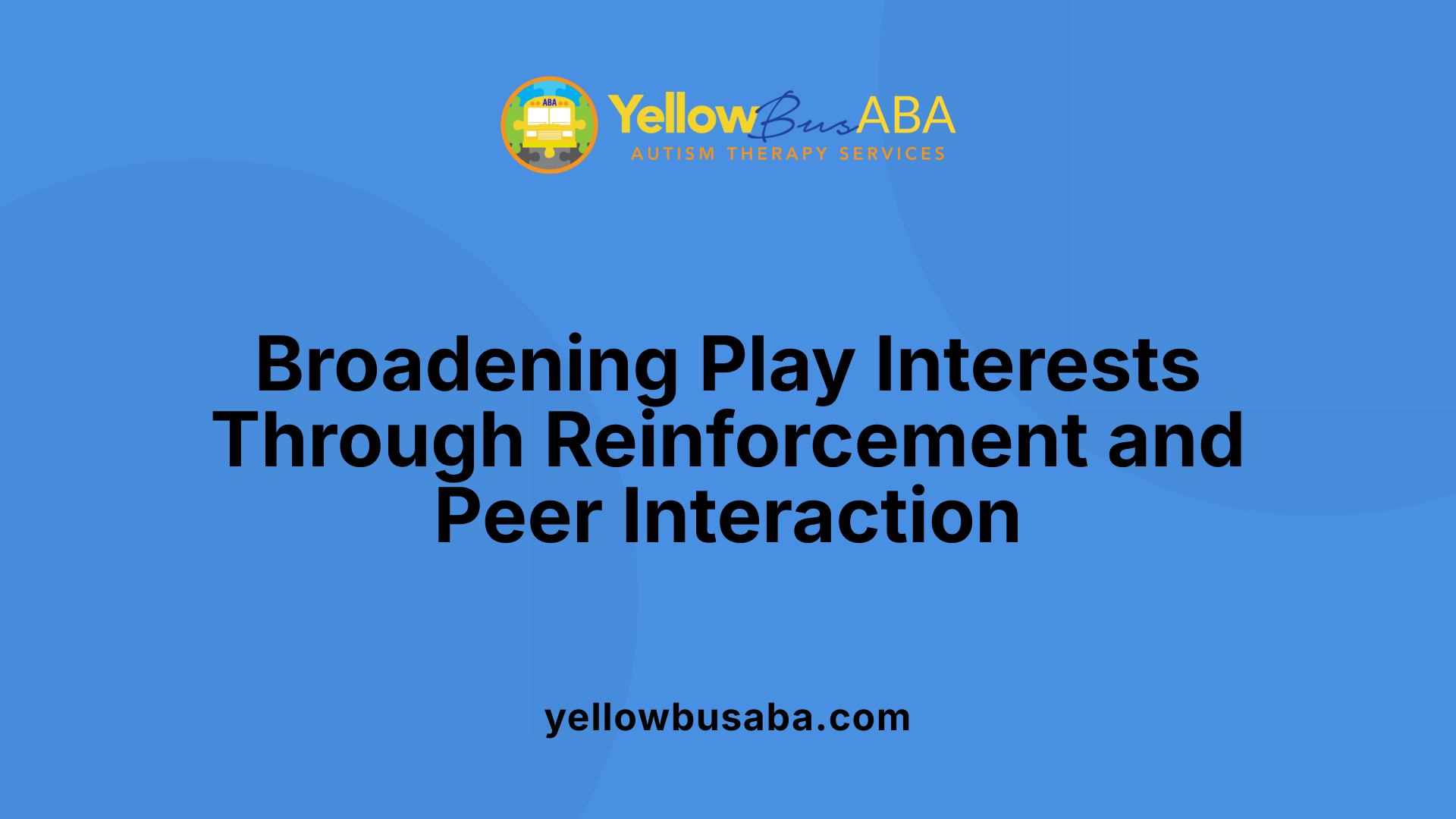How ABA Therapy Supports Children with Autism in Engaging in Functional Play
October 29, 2025
Unlocking Play: The Role of ABA in Autism Development

Understanding the Impact of ABA Therapy on Functional Play
For children with autism, engaging in meaningful, functional play is a vital component of their overall development, fostering social skills, independence, and communication. Applied Behavior Analysis (ABA) therapy is a well-established, evidence-based approach that promotes these essential skills through tailored interventions. This article explores how ABA therapy supports children with autism in engaging more fully in functional play, detailing methods used, benefits gained, and the scientific backing for these strategies.
Personalized Assessment and Goal Setting in ABA Therapy

What are the benefits of ABA therapy in promoting functional play skills among children with autism?
ABA therapy plays a vital role in developing functional play skills by employing structured and personalized activities tailored to each child's unique interests and developmental level. Through play-based strategies, children learn to engage actively with toys and objects in ways that mirror everyday life, such as stacking blocks or pretend play with dolls. These activities encourage children to imitate actions, take turns, and explore different play scenarios, which enhances their social and problem-solving skills.
Incorporating sensory and fine motor activities supports the child's sensory processing and coordination, making play experiences more meaningful. ABA therapy also uses role-playing and cooperative games to foster communication skills and social understanding. These methods build a foundation for independent play, emotional regulation, and adaptive behavior necessary for daily living, ultimately helping children become more autonomous and socially integrated.
Teaching and Reinforcing Functional Play Skills

What methods and strategies are used in ABA therapy to enhance play development?
ABA therapy employs a range of techniques aimed at improving play skills among children with autism. One widely used approach is discrete trial training (DTT), which involves breaking down play activities into small, manageable steps and practicing them repeatedly to foster mastery.
In addition, naturalistic methods such as Pivotal Response Treatment (PRT) incorporate play and a child's natural interests, making learning engaging and meaningful. The Early Start Denver Model (ESDM) combines play-based, enjoyable activities with ABA principles to promote overall developmental progress.
Visual supports also play a crucial role. Tools like turn-taking visuals or First/Then charts help structure play sessions and help children understand expectations, facilitating smoother interactions.
Reinforcement remains central to these strategies. Children are frequently encouraged with praise, tokens, or access to preferred items to motivate participation and reinforce successful play behaviors.
By combining these techniques, ABA therapists help children develop functional play skills that are essential for social interaction, language development, and independence.
Expanding Interests and Promoting Social Engagement in Play

How do you gradually introduce age-appropriate toys?
Introducing age-appropriate toys to children with autism requires patience and strategic planning. The process begins with observing what interests the child—whether lights, noises, or movement—and selecting toys that share similar features. Starting with simple toys like pop-up toys, which are easy to operate, can help the child develop confidence in independent play.
To broaden their play skills, caregivers gradually introduce toys that are appropriate for their developmental level but also slightly more challenging. For example, if a child enjoys pushing buttons on a toy, a caregiver might introduce toys that require similar actions but introduce more complex functions. Using toys that mirror the features of those the child already enjoys helps ease transition and promote engagement.
Over time, children can be encouraged to explore new toys by demonstrating how to use them correctly, praising their efforts, and providing consistent practice opportunities. Patience is critical—it's important to allow the child time to explore toys at their own pace and avoid overwhelming them. The ultimate goal is to expand their interest range, enabling more varied and functional play.
How does reinforcement and modeling support interest expansion?
Reinforcement is a cornerstone of ABA therapy and plays a vital role in expanding a child's toy interests and play skills. Pairing preferred items with new toys—also known as pairing—serves to create positive associations, making children more likely to engage with unfamiliar toys.
Using observed play models, such as therapists or family members demonstrating how to utilize a toy appropriately, encourages imitation and learning new play behaviors. Positive attention, praise, and tangible reinforcers motivate children to try new activities and sustain interest in toy use.
Behavior analysts carefully consider the reasons a child prefers certain toys or activities and tailor interventions accordingly. For example, if a child prefers noisy or movement-based toys, introducing related items that serve similar functions can promote interest expansion.
Data collection helps monitor engagement levels and refine strategies over time, ensuring that toy and activity choices are effective. Systematic interest expansion involves gradually introducing new toys or activities, often with the support of reinforcement, to prevent boredom and promote motivation.
How is social play and peer interaction built through ABA?
Building social play and peer interactions is an essential part of ABA therapy. Techniques such as structured play routines, turn-taking games, and collaborative activities help children practice social skills in a meaningful context.
Floor time, a specific play therapy approach, involves therapists, parents, and children playing together with the child's lead. During these sessions, children learn vital skills such as initiating interaction, understanding social cues, and regulating emotions. These sessions typically begin with unstructured play, where children select activities freely, fostering independence and self-expression.
As the child becomes more comfortable, the session may include guided tasks like shape matching or introducing new toys, fostering cooperation and communication.
Encouraging peer interaction involves creating opportunities for children to play together in supervised settings. The goal is to develop sharing, turn-taking, and empathy—foundational skills for friendship and social success.
Research shows that play-based interventions like floor time have about a 58% success rate in engaging children actively, improving communication, and promoting self-regulation.
Efforts to expand interests and play complexities often lead to increased social opportunities, improved flexibility, and decreased passive or stereotypic behaviors. As children develop a broader play repertoire, they are better equipped to adapt to new environments and engage meaningfully with peers.
| Strategies | Description | Benefits |
|---|---|---|
| Gradual Toy Introduction | Introducing toys aligned with child's interest and developmental level through step-by-step | Fosters confidence, encourages exploration, builds functional play skills |
| Reinforcement & Modeling | Using praise, preferred items, and demonstration to motivate and teach new play behaviors | Increases engagement, promotes imitation, expands interest in toys and activities |
| Social Play Techniques | Using structured routines, turn-taking, and peer interactions to develop social skills | Enhances communication, cooperation, and peer relationship building |
Developing play skills and social engagement in children with autism involves a combination of structured approaches, reinforcement, modeling, and patience. The focus remains on fostering independence, communication, and meaningful social interactions, which are essential for overall development.
Fading Prompts and Teaching Initiation Skills for Spontaneous Play

How Can Teaching Children to Initiate Play Support Their Development?
Encouraging children to initiate play is important because it fosters independence, creativity, and social interaction. When children learn to independently start an activity, they gain confidence, explore their interests more fully, and engage more naturally with peers and adults. This skill is especially beneficial for children on the autism spectrum, who may struggle with initiating interactions.
What Strategies Are Used to Fade Verbal Prompts Gradually?
Fading prompts involves systematically reducing cues so children can perform desired behaviors on their own. In the context of spontaneous play, this means slowly diminishing verbal instructions or hints used by caregivers or therapists. Initially, a child might be prompted to start playing with their favorite toy, but as they demonstrate understanding, prompts are gradually withdrawn.
Techniques for fading prompts include:
- Visual cues: Using pictures or tokens that cue the child to start interacting.
- Modeling: Demonstrating the initiation behavior without additional prompts.
- Partial prompting: Giving less guidance over time, such as only a subtle prompt or gesture.
- Reinforcement: Providing praise or preferred items when children initiate independently.
The goal is to help the child develop confidence in initiating without reliance on prompts, leading to more natural play behaviors.
How Can Reinforcement and Modeling Be Utilized to Promote Spontaneous Play?
Reinforcement involves offering praise, tangible rewards, or preferred activities when children initiate play activities. Positive attention makes initiating desirable behaviors more likely to recur.
Modeling plays a crucial role by demonstrating how to start or continue an activity. For example, a therapist or parent might show how to press a button on a toy or say
The Power of Tailored ABA Interventions in Enhancing Play Skills
ABA therapy’s structured yet flexible approach plays a crucial role in helping children with autism develop functional play skills. By systematically teaching, reinforcing, and expanding play behaviors, ABA not only fosters independence and social engagement but also lays the groundwork for more complex, symbolic, and imaginative play. The ongoing collaboration between therapists, families, and educators ensures that interventions are personalized, effective, and sustainable, ultimately enhancing the child's ability to participate meaningfully in both play and daily life. As research continues to validate its positive outcomes, ABA remains a cornerstone in supporting children with autism towards more enriching and socially connected lives.

.avif)




